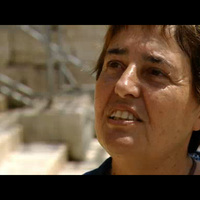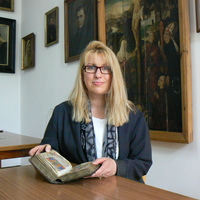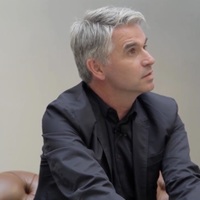Sophie Raux
1994-2016, Associate Professor in Art History, University of Lille
2016- , Professor of Art History, University of Lyon 2
2021-, Head of the Laboratoire de Recherche Historique Rhône-Alpes (LARHRA)
Address: Lille, Nord-Pas-de-Calais, France
Lyon, France
2016- , Professor of Art History, University of Lyon 2
2021-, Head of the Laboratoire de Recherche Historique Rhône-Alpes (LARHRA)
Address: Lille, Nord-Pas-de-Calais, France
Lyon, France
less
Related Authors
Ad Stijnman
Herzog August Bibliothek Wolfenbüttel
Olga Palagia
National & Kapodistrian University of Athens
Christiane Gruber
University of Michigan
Kathryn Rudy
University of St Andrews
Brian Fay
Technological University Dublin, Ireland
Francesco Grisolia
"Tor Vergata" University of Rome
jelena bogdanovic
Vanderbilt University
Ilia Palaguta
Saint-Petersburg Stieglitz State Academy of Art and Design
Loredana Lorizzo
University of Salerno
Viacheslav Kuleshov
Stockholm University
InterestsView All (7)










Uploads
Books by Sophie Raux
So many questions that motivated this digital reconstruction of the Notre-Dame bridge. By striving to restore the meaning of the spaces and volumes of its disappeared architecture, such as making the light and sound of its environment sensitive, its authors offer an original 5D exploration of the bridge, as well as a reflection on the contribution of digital technologies to historical research.
Le pont Notre-Dame fut l’un des ponts habités les plus extraordinaires de Paris. Son histoire reste attachée à un événement : la présentation éphémère en façade de la boutique de Gersaint de la fameuse Enseigne peinte par Watteau en 1720. A quoi ressemblait ce pont monumental avant la destruction de ses habitations ? Pourquoi L’Enseigne de Gersaint eut-elle un tel retentissement ? Comment se projeter dans cet univers si étranger à notre expérience actuelle des ponts parisiens ? Comment dépasser l’image mentale que chacun peut se faire à partir des sources qui nous sont parvenues ? Autant de questions qui ont motivé cette restitution numérique du pont Notre-Dame. En s’attachant à restituer le sens des espaces et des volumes de son architecture disparue, ainsi qu’à̀ rendre sensible l’ambiance lumineuse et sonore de son environnement, ses auteurs offrent une exploration inédite en 5D du pont, ainsi qu’une réflexion sur l’apport des technologies numériques à la recherche historique.
L’évolution des statuts de l’image imprimée est une question des plus actuelles et des plus transversales à travers les siècles. Elle se rattache pleinement à l’histoire de la culture visuelle et appelle de stimulantes approches interdisciplinaires. Elle est au cœur de ce recueil auquel ont contribué de nombreux spécialistes, chercheurs en histoire de l’art, en économie de l’art, conservateurs de musées, conservateurs de bibliothèques, experts…
Papers by Sophie Raux
So many questions that motivated this digital reconstruction of the Notre-Dame bridge. By striving to restore the meaning of the spaces and volumes of its disappeared architecture, such as making the light and sound of its environment sensitive, its authors offer an original 5D exploration of the bridge, as well as a reflection on the contribution of digital technologies to historical research.
Le pont Notre-Dame fut l’un des ponts habités les plus extraordinaires de Paris. Son histoire reste attachée à un événement : la présentation éphémère en façade de la boutique de Gersaint de la fameuse Enseigne peinte par Watteau en 1720. A quoi ressemblait ce pont monumental avant la destruction de ses habitations ? Pourquoi L’Enseigne de Gersaint eut-elle un tel retentissement ? Comment se projeter dans cet univers si étranger à notre expérience actuelle des ponts parisiens ? Comment dépasser l’image mentale que chacun peut se faire à partir des sources qui nous sont parvenues ? Autant de questions qui ont motivé cette restitution numérique du pont Notre-Dame. En s’attachant à restituer le sens des espaces et des volumes de son architecture disparue, ainsi qu’à̀ rendre sensible l’ambiance lumineuse et sonore de son environnement, ses auteurs offrent une exploration inédite en 5D du pont, ainsi qu’une réflexion sur l’apport des technologies numériques à la recherche historique.
L’évolution des statuts de l’image imprimée est une question des plus actuelles et des plus transversales à travers les siècles. Elle se rattache pleinement à l’histoire de la culture visuelle et appelle de stimulantes approches interdisciplinaires. Elle est au cœur de ce recueil auquel ont contribué de nombreux spécialistes, chercheurs en histoire de l’art, en économie de l’art, conservateurs de musées, conservateurs de bibliothèques, experts…
A team of international experts from relevant fields such art history, economics, sociology, finance and digital humanities will engage with participants with an academic or professional interest in the global art market.
Lyon (France), June 24-28, 2019
This thematic school is organized by the LARHRA and the Université Lumière Lyon 2 in collaboration with the Université Libre de Bruxelles and Erasmus University, Rotterdam.
It aims to provide the research community interested in the study of art markets with an interdisciplinary theoretical approach and methodological tools in line with the most up-to-date analytical methods in order to bring out new research perspectives.
About fifteen international specialists in art history, economics, law, sociology, finance, digital humanities from all over Europe and the United States will animate it in a spirit of exchange and sharing of knowledge.
The training is aimed at the entire scientific community - professors-researchers, researchers, post-doctoral fellows, doctoral students, staff of research support (ITA).
It should also be of interest for experts and professionals active in the art market. It is open to all participants from Master 2 level onwards, preferably in a discipline related to the study of art markets: economic history, art history, economics, finance, sociology, law.
It will include theoretical and methodological interventions, open to confrontation and exchange of views.
The mornings will be devoted to theoretical presentations built around concepts and themes central to the analysis of art markets. Specialists from different disciplinary fields will present their approaches in dialogue with colleagues from different backgrounds. As an extension of the theoretical courses, the afternoons will be devoted to methodological approaches in the form of interactive workshops offering practical exercises.
Visits and moments of conviviality will be arranged in order to reinforce the coherence of the group
Deadline for registration : March 15, 2019
Information and registration on https:// artmarkets2019.sciencesconf.org/
Contact : artmarkets2019@sciencesconf.org
This thematic school has received support from the CNRS, IDEX Lyon, Université Lumière Lyon 2, LARHRA, College académique Sciences Sociales de l’Université de Lyon.
These questions, which have bothered humanity for centuries, formed a remarkable element of early modern European thought. This collection of essays presents new insights into what shaped and constituted reflections on fate and fortune between, roughly, 1400 and 1650, both in word and image. This volume argues that these ideas were emblematic of a more fundamental argument about the self, society, and the universe and shows that their influence was more widespread, geographically and thematically, than hitherto assumed.
https://brill.com/view/title/36100